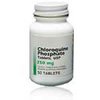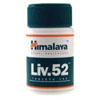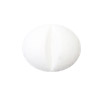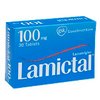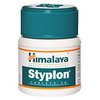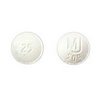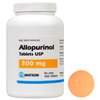INDICATIONS
Chloroquine is indicated for the suppressive treatment and for acute attacks of malaria due to P. vivax, P.malariae, P. ovale, and susceptible strains of P. falciparum. The drug is also indicated for the treatment of extraintestinal amebiasis.
INSTRUCTIONS
Take chloroquine with meals or milk to lessen stomach upset, unless otherwise directed by your doctor.
t is very important that you take chloroquine only as directed. Do not take more of it, do not take it more often, and do not take it for a longer time than your doctor ordered. To do so may increase the chance of serious side effects.
If you are taking chloroquine to help keep you from getting malaria, keep taking it for the full time of treatment. If you already have malaria, you should still keep taking chloroquine for the full time of treatment even if you begin to feel better after a few days. This will help to clear up your infection completely. If you stop taking chloroquine too soon, your symptoms may return.
Chloroquine works best when you take it on a regular schedule. For example, if you are to take it once a week to prevent malaria, it is best to take it on the same day each week. Or if you are to take two doses a day, one dose may be taken with breakfast and the other with the evening meal. Make sure that you do not miss any doses. If you have any questions about this, check with your health care professional.
If you miss a dose of chloroquine, take it as soon as possible. However, if it is almost time for your next dose, skip the missed dose and go back to your regular dosing schedule. Do not double doses.
DOSAGE
The dosage of chloroquine phosphate is often expressed in terms of equivalent chloroquine base. Each 500 mg tablet of ARALEN contains the equivalent of 300 mg chloroquine base. In infants and children the dosage is preferably calculated by body weight.
Malaria: Suppression - Adult Dose: 500 mg (= 300 mg base) on exactly the same day of each week.
Pediatric Dose: The weekly suppressive dosage is 5 mg calculated as base, per kg of body weight, but should not exceed the adult dose regardless of weight.
If circumstances permit, suppressive therapy should begin two weeks prior to exposure. However, failing this in adults, an initial double (loading) dose of 1 g (= 600 mg base), or in children 10 mg base/kg may be taken in two divided doses, six hours apart. The suppressive therapy should be continued for eight weeks after leaving the endemic area.
For Treatment of Acute Attack.
Adults: An initial dose of 1 g (= 600 mg base) followed by an additional 500 mg (= 300 mg base) after six to eight hours and a single dose of 500 mg (= 300 mg base) on each of two consecutive days. This represents a total dose of 2.5 g chloroquine phosphate or 1.5 g base in three days.
The dosage for adults of low body weight and for infants and children should be determined as follows:
First dose: 10 mg base per kg (but not exceeding a single dose of 600 mg base).
Second dose: (6 hours after first dose) 5 mg base per kg (but not exceeding a single dose of 300 mg base).
Third dose: (24 hours after first dose) 5 mg base per kg.
Fourth dose: (36 hours after first dose) 5 mg base per kg.
For radical cure of vivax and malariae malaria concomitant therapy with an 8-aminoquinoline compound is necessary.
Extraintestinal Amebiasis: Adults,1 g (600 mg base) daily for two days, followed by 500 mg (300 mg base) daily for at least two to three weeks. Treatment is usually combined with an effective intestinal amebicide.
STORAGE
Store the medicine in a closed container at room temperature, away from heat, moisture, and direct light. Keep from freezing.
Keep out of the reach of children.
Do not keep outdated medicine or medicine no longer needed.

